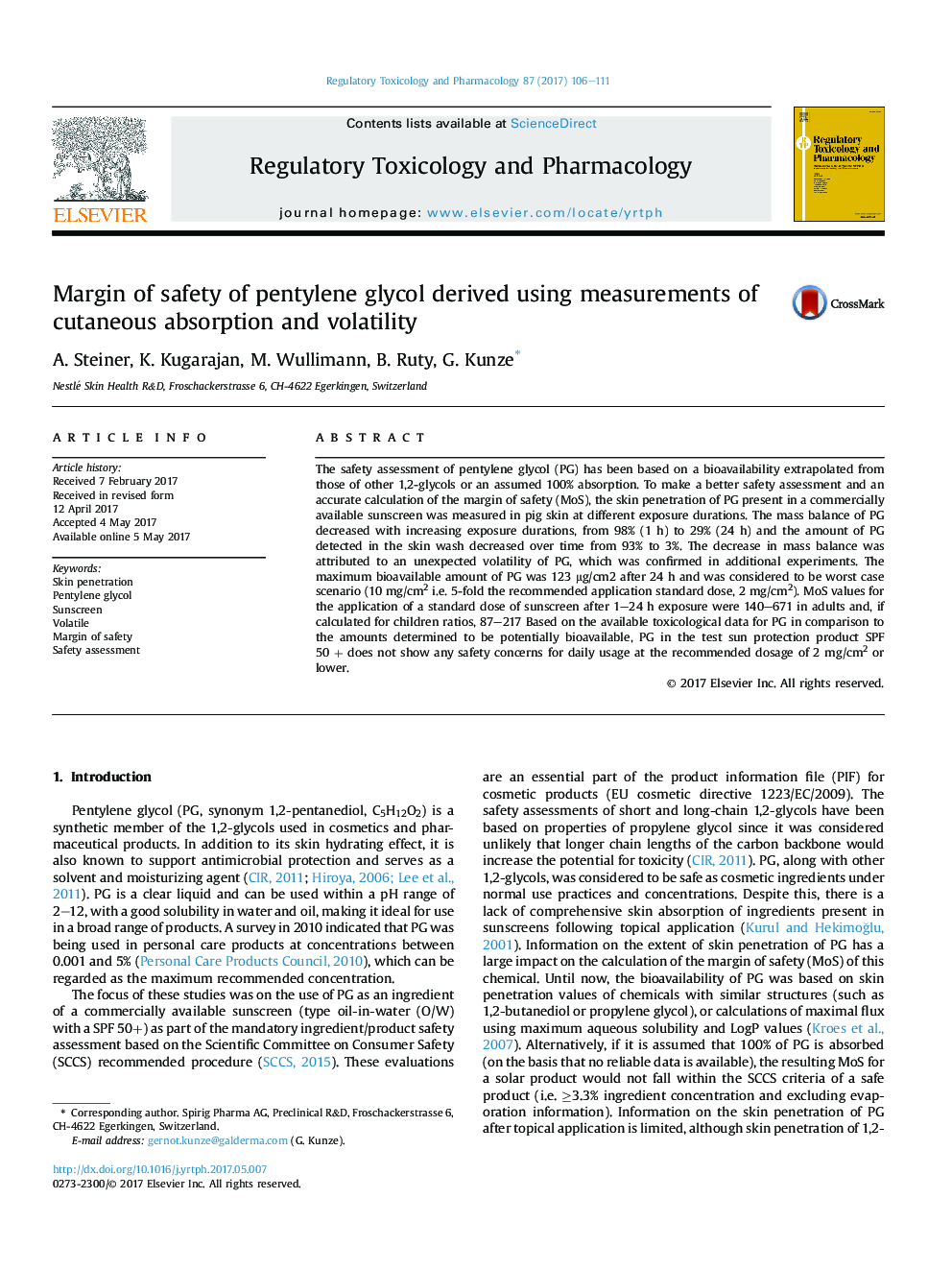| Article ID | Journal | Published Year | Pages | File Type |
|---|---|---|---|---|
| 5561328 | Regulatory Toxicology and Pharmacology | 2017 | 6 Pages |
â¢Pentylene glycol (PG) is used in sunscreens.â¢Skin penetration of PG was measured in pig skin at different exposure durations.â¢A decrease in mass balance was confirmed to be due to PG volatility.â¢The MoS for standard sunscreen doses after 1-24 h exposure were 140-671 in adults.â¢Using these and toxicology data, PG do shows no safety concerns for daily use.
The safety assessment of pentylene glycol (PG) has been based on a bioavailability extrapolated from those of other 1,2-glycols or an assumed 100% absorption. To make a better safety assessment and an accurate calculation of the margin of safety (MoS), the skin penetration of PG present in a commercially available sunscreen was measured in pig skin at different exposure durations. The mass balance of PG decreased with increasing exposure durations, from 98% (1 h) to 29% (24 h) and the amount of PG detected in the skin wash decreased over time from 93% to 3%. The decrease in mass balance was attributed to an unexpected volatility of PG, which was confirmed in additional experiments. The maximum bioavailable amount of PG was 123 μg/cm2 after 24 h and was considered to be worst case scenario (10 mg/cm2 i.e. 5-fold the recommended application standard dose, 2 mg/cm2). MoS values for the application of a standard dose of sunscreen after 1-24 h exposure were 140-671 in adults and, if calculated for children ratios, 87-217 Based on the available toxicological data for PG in comparison to the amounts determined to be potentially bioavailable, PG in the test sun protection product SPF 50 + does not show any safety concerns for daily usage at the recommended dosage of 2 mg/cm2 or lower.
